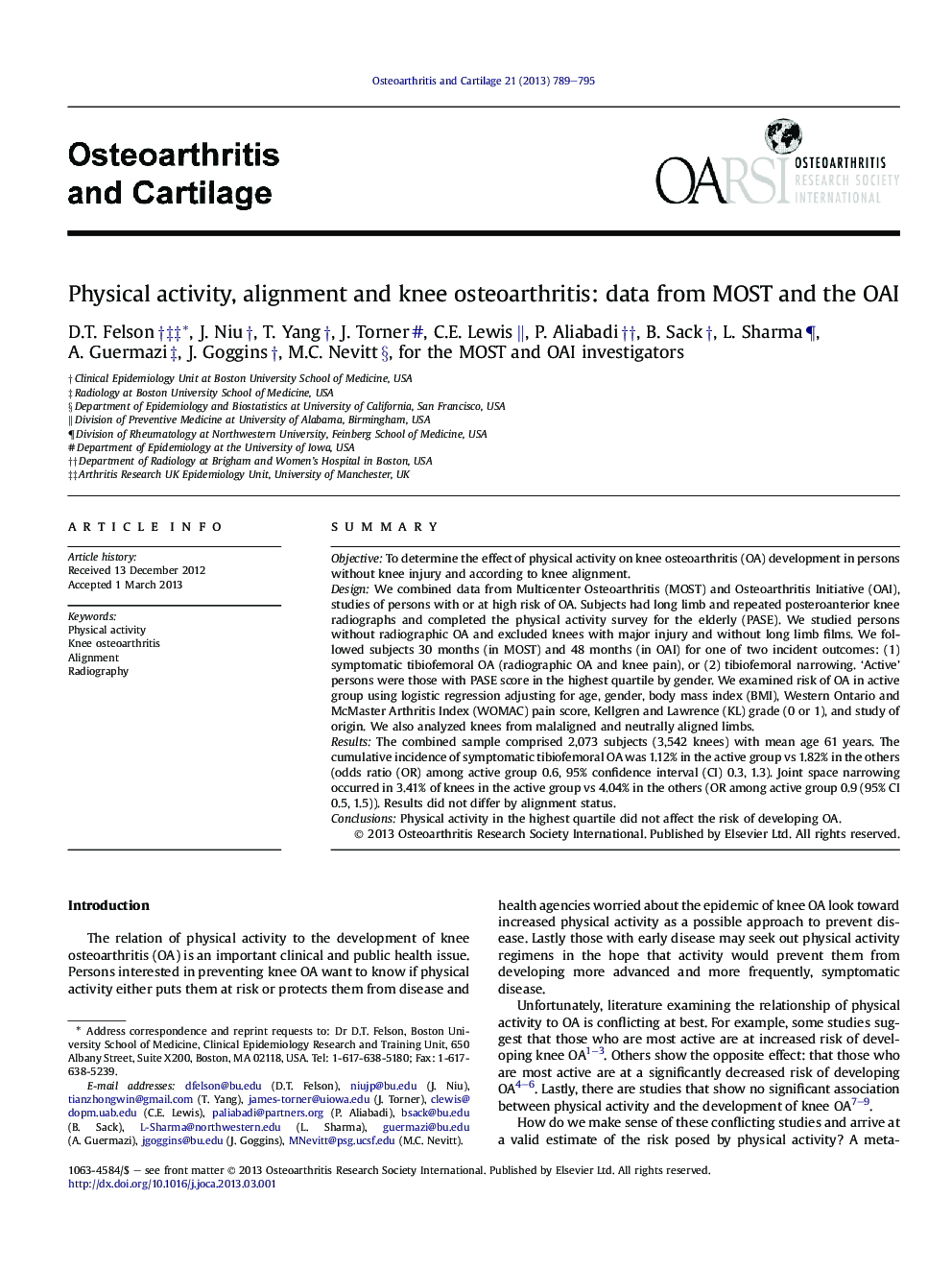| Article ID | Journal | Published Year | Pages | File Type |
|---|---|---|---|---|
| 3379593 | Osteoarthritis and Cartilage | 2013 | 7 Pages |
SummaryObjectiveTo determine the effect of physical activity on knee osteoarthritis (OA) development in persons without knee injury and according to knee alignment.DesignWe combined data from Multicenter Osteoarthritis (MOST) and Osteoarthritis Initiative (OAI), studies of persons with or at high risk of OA. Subjects had long limb and repeated posteroanterior knee radiographs and completed the physical activity survey for the elderly (PASE). We studied persons without radiographic OA and excluded knees with major injury and without long limb films. We followed subjects 30 months (in MOST) and 48 months (in OAI) for one of two incident outcomes: (1) symptomatic tibiofemoral OA (radiographic OA and knee pain), or (2) tibiofemoral narrowing. ‘Active’ persons were those with PASE score in the highest quartile by gender. We examined risk of OA in active group using logistic regression adjusting for age, gender, body mass index (BMI), Western Ontario and McMaster Arthritis Index (WOMAC) pain score, Kellgren and Lawrence (KL) grade (0 or 1), and study of origin. We also analyzed knees from malaligned and neutrally aligned limbs.ResultsThe combined sample comprised 2,073 subjects (3,542 knees) with mean age 61 years. The cumulative incidence of symptomatic tibiofemoral OA was 1.12% in the active group vs 1.82% in the others (odds ratio (OR) among active group 0.6, 95% confidence interval (CI) 0.3, 1.3). Joint space narrowing occurred in 3.41% of knees in the active group vs 4.04% in the others (OR among active group 0.9 (95% CI 0.5, 1.5)). Results did not differ by alignment status.ConclusionsPhysical activity in the highest quartile did not affect the risk of developing OA.
